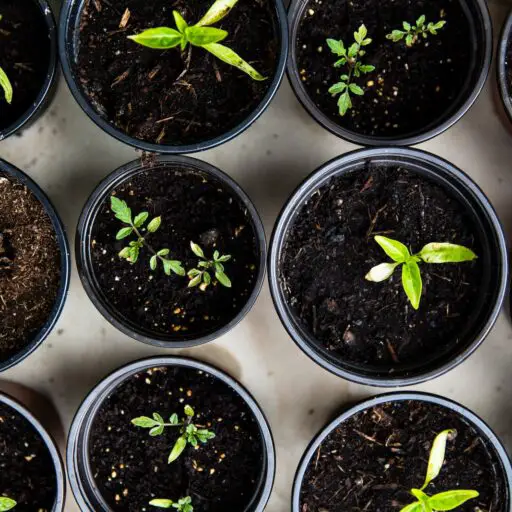Support our educational content for free when you purchase through links on our site. Learn more

Have you ever walked past a community garden and wondered what magic happens behind those vibrant green fences? 🌿 Community gardens are not just patches of land filled with tomatoes and sunflowers; they are thriving ecosystems of community spirit, sustainability, and shared purpose. In this article, we’ll dive deep into the 10 inspiring goals of community gardens that go beyond mere food production. Did you know that community gardens can reduce depression rates by up to 60%? (Source: PHS Online).
Join us as we explore how these gardens can transform neighborhoods, foster social connections, and promote environmental sustainability. Whether you’re a seasoned gardener or a curious newbie, there’s something here for everyone. So, grab your trowel and let’s dig into the heart of community gardening!
Key Takeaways
- Community gardens foster social connections by bringing neighbors together to collaborate and share experiences.
- They play a crucial role in promoting food security, providing access to fresh produce in urban areas.
- These gardens are a hub for educational opportunities, teaching valuable gardening and sustainability skills.
- Community gardens contribute to mental well-being, offering therapeutic benefits and reducing stress.
- They are vital for environmental sustainability, supporting local biodiversity and eco-friendly practices.
Ready to start your own community garden or enhance your gardening skills? Check out our recommended gardening tools and supplies to get started! 🌼 Shop Gardening Tools on Amazon | Explore Organic Seeds Variety Packs
Table of Contents
- Quick Tips and Facts About Community Gardens 🌱
- The Roots of Community Gardens: A Historical Perspective 🌍
- What is a Community Garden? 🌼
- What are the Goals of a Community Garden? 🎯
- The Multifaceted Benefits of Community Gardens 🌿
- How to Start Your Own Community Garden: A Step-by-Step Guide 🛠️
- Community Gardens and Sustainability: Growing Green Together ♻️
- Engaging the Community: How to Foster Participation in Your Garden 🤝
- Challenges and Solutions in Community Gardening 🚧
- Frequently Asked Questions About Community Gardens ❓
- Conclusion: Cultivating Community Through Gardening 🌻
- Recommended Links for Community Garden Enthusiasts 📚
- FAQ: Your Community Garden Queries Answered 📖
- Reference Links for Further Reading 🔗
Quick Tips and Facts About Community Gardens 🌱
- Community gardens are shared spaces where individuals come together to grow food, flowers, and relationships.
- They promote sustainability by using eco-friendly gardening practices.
- Community gardens can significantly improve mental health, reducing depression by up to 60% (source: PHS Online).
- These gardens often serve as a catalyst for community engagement, fostering connections among diverse groups.
- They provide access to fresh produce, which is crucial for healthy living.
- Starting a community garden can be a rewarding project that enhances local biodiversity.
The Roots of Community Gardens: A Historical Perspective 🌍
Community gardens have a rich history that dates back to the victory gardens of World War I and II, where citizens were encouraged to grow their own food to support the war effort. Fast forward to today, and these gardens have evolved into vibrant spaces that not only provide food but also foster community spirit.
Key Historical Milestones:
- 1940s: Victory gardens emerge, promoting self-sufficiency.
- 1970s: The community gardening movement gains momentum in urban areas, particularly in the U.S.
- 2000s: Recognition of community gardens as vital for urban sustainability and food security.
Community gardens are now seen as essential for urban revitalization, transforming vacant lots into green spaces that benefit both the environment and the community.
What is a Community Garden? 🌼
A community garden is a shared plot of land where individuals or groups come together to cultivate plants. These gardens can vary in size and purpose, from small backyard plots to larger urban farms.
Key Features:
- Shared Responsibility: Community members collaborate on planting, maintenance, and harvesting.
- Diverse Crops: Gardens often feature a mix of vegetables, flowers, and herbs, promoting biodiversity.
- Educational Opportunities: Many gardens offer workshops and classes on gardening techniques and sustainable practices.
Community gardens are not just about growing food; they are about growing community!
What are the Goals of a Community Garden? 🎯
The primary goals of community gardens extend beyond just planting seeds. They aim to cultivate a sense of belonging and shared responsibility among community members.
Core Goals:
- Foster Community Bonds: Create a space for neighbors to connect and collaborate.
- Promote Food Security: Provide access to fresh, healthy food for local residents.
- Encourage Sustainable Practices: Implement eco-friendly gardening techniques to benefit the environment.
- Enhance Mental Well-being: Offer a therapeutic space that reduces stress and promotes happiness.
- Educate and Empower: Provide resources and knowledge to help individuals grow their own food.
As highlighted by Ecolife, community gardens serve as a platform for individuals to not only grow food but also to grow relationships and a sense of community.
The Multifaceted Benefits of Community Gardens 🌿
Community gardens offer a plethora of benefits that can transform neighborhoods and improve the quality of life. Here are 10 amazing benefits that we at Community Gardening™ have observed:
- Access to Fresh Produce: Community gardens provide fresh fruits and vegetables, promoting healthier eating habits.
- Social Interaction: They serve as social hubs where people can meet, share stories, and build friendships.
- Environmental Impact: Gardens help improve air quality and support local wildlife.
- Educational Opportunities: Workshops and hands-on experiences teach valuable gardening skills.
- Economic Benefits: Community gardens can increase property values and create local jobs.
- Physical Activity: Gardening is a great way to stay active and healthy.
- Mental Health Improvement: Spending time in nature can reduce anxiety and depression.
- Cultural Exchange: Gardens often reflect the diversity of the community, allowing for cultural sharing.
- Community Pride: A well-maintained garden enhances neighborhood aesthetics and fosters pride.
- Food Sovereignty: Empowering communities to grow their own food can lead to greater food independence.
For a deeper dive into these benefits, check out our article on Discover 10 Amazing Benefits of Community Gardens 🌱.
How to Start Your Own Community Garden: A Step-by-Step Guide 🛠️
Starting a community garden can be an exciting and fulfilling project! Here’s a detailed step-by-step guide to help you get started:
Step 1: Gather Community Interest
- Host a Meeting: Invite neighbors to discuss the idea of a community garden.
- Create a Survey: Gauge interest and gather input on what people would like to grow.
Step 2: Find a Suitable Location
- Look for Available Land: Check for vacant lots, parks, or schoolyards that could be used.
- Get Permission: Contact landowners or local authorities to secure permission.
Step 3: Form a Garden Committee
- Recruit Volunteers: Assemble a team of dedicated individuals to help manage the garden.
- Assign Roles: Designate responsibilities for planning, maintenance, and outreach.
Step 4: Plan the Garden Layout
- Design the Space: Decide on plots, pathways, and communal areas.
- Choose Crops: Select a variety of plants based on community preferences and local climate.
Step 5: Prepare the Soil
- Test the Soil: Conduct a soil test to check for contaminants and nutrient levels.
- Amend the Soil: Add compost and organic matter to improve soil health.
Step 6: Plant and Maintain
- Start Planting: Organize a planting day and encourage community participation.
- Regular Maintenance: Schedule regular workdays for weeding, watering, and harvesting.
Step 7: Celebrate and Share
- Host Events: Organize harvest festivals, potlucks, or workshops to celebrate the garden.
- Share Produce: Consider donating excess produce to local food banks or community members in need.
By following these steps, you can create a thriving community garden that brings people together and nourishes both body and soul!
Community Gardens and Sustainability: Growing Green Together ♻️
Community gardens play a crucial role in promoting sustainable practices and environmental stewardship. Here’s how they contribute to a greener planet:
Sustainable Practices in Community Gardens:
- Organic Gardening: Many community gardens prioritize organic methods, avoiding harmful pesticides and fertilizers.
- Water Conservation: Techniques like rainwater harvesting and drip irrigation help conserve water.
- Biodiversity: By planting a variety of crops, gardens support local ecosystems and pollinators.
- Composting: Community gardens often incorporate composting to reduce waste and enrich the soil.
Sustainability is not just a buzzword; it’s a way of life that community gardens embody. They teach us how to live in harmony with nature while providing essential resources for our communities.
Engaging the Community: How to Foster Participation in Your Garden 🤝
Creating a vibrant community garden requires active participation from local residents. Here are some effective strategies to engage your community:
Strategies for Engagement:
- Host Workshops: Offer classes on gardening techniques, cooking with fresh produce, or sustainable practices.
- Create a Newsletter: Keep the community informed about garden activities, events, and volunteer opportunities.
- Social Media Presence: Use platforms like Facebook and Instagram to share updates and connect with the community.
- Incentives for Participation: Consider offering rewards for volunteers, such as free produce or garden-related prizes.
By fostering a sense of ownership and involvement, you can ensure that your community garden thrives and becomes a beloved local resource.
Challenges and Solutions in Community Gardening 🚧
While community gardens offer numerous benefits, they also face challenges. Here are some common obstacles and practical solutions:
Common Challenges:
-
Funding Issues: Securing financial support for garden supplies and maintenance can be difficult.
- Solution: Organize fundraising events or apply for grants from local organizations.
-
Conflict Among Members: Disagreements can arise over garden management and responsibilities.
- Solution: Establish clear guidelines and hold regular meetings to address concerns.
-
Pest and Disease Management: Gardens can attract pests and diseases that threaten crops.
- Solution: Implement integrated pest management strategies and encourage organic practices.
By proactively addressing these challenges, community gardens can flourish and continue to serve their vital role in the community.
Frequently Asked Questions About Community Gardens ❓
What is the size of a typical community garden?
Community gardens can vary widely in size, from small plots of a few hundred square feet to larger spaces covering several acres. The size often depends on community interest and available land.
How can I find a community garden near me?
You can search for local community gardens through websites like American Community Gardening Association or check with local gardening clubs and organizations.
Can I start a community garden in my neighborhood?
Absolutely! Starting a community garden is a great way to bring people together and promote sustainability. Follow the steps outlined above to get started.
Are community gardens only for growing vegetables?
No, community gardens can include flowers, herbs, and even fruit trees. The focus is on creating a diverse and productive space that meets the community’s needs.
How can I get involved in my local community garden?
Reach out to local garden committees or organizations to inquire about volunteer opportunities. Many gardens welcome new members and offer various ways to participate.
Conclusion: Cultivating Community Through Gardening 🌻

Community gardens are more than just plots of land; they are thriving ecosystems that foster connections, promote sustainability, and enhance the quality of life. By understanding their goals and benefits, you can become an active participant in this rewarding movement. Whether you’re starting your own garden or joining an existing one, remember that every seed planted is a step toward a healthier, happier community!
Recommended Links for Community Garden Enthusiasts 📚
- Benefits of Community Gardens
- Community Garden Events
- Community Garden Policies
- Garden Design Ideas
- Garden Maintenance Tips
FAQ: Your Community Garden Queries Answered 📖

If you have more questions about community gardens, feel free to reach out to us or explore our extensive resources on the Community Gardening™ website!
Reference Links for Further Reading 🔗
- American Community Gardening Association
- PHS Online – Benefits of Community Gardens
- Ecolife – Community Garden Definition
Conclusion: Cultivating Community Through Gardening 🌻

In summary, community gardens are vibrant spaces that do much more than just grow plants—they cultivate relationships, enhance mental well-being, and promote sustainability. By bringing people together, these gardens create a sense of belonging and shared responsibility that enriches neighborhoods. Whether you’re looking to improve your community’s access to fresh produce, foster social connections, or simply enjoy the therapeutic benefits of gardening, getting involved in a community garden is a fantastic way to make a positive impact.
As we explored, the goals of community gardens are multi-faceted, focusing on food security, environmental sustainability, and community engagement. The benefits are numerous, from improved mental health to enhanced local biodiversity. So, if you’ve been inspired to start or join a community garden, now is the time to dig in and plant those seeds of change! 🌱
Recommended Links for Community Garden Enthusiasts 📚
-
Books on Community Gardening:
- “The Community Garden Handbook”: Shop on Amazon
- “The Edible City: A Year-Round Guide to Growing Your Own Food”: Shop on Amazon
-
Gardening Tools and Supplies:
- Gardening Tools Set: Shop on Amazon
- Organic Seeds Variety Pack: Shop on Amazon
FAQ: Your Community Garden Queries Answered 📖

What is the purpose of the community garden?
Community gardens serve multiple purposes, including providing a space for individuals to grow their own food, fostering social connections, and promoting environmental sustainability. They are designed to enhance community engagement and provide access to fresh produce, especially in urban areas where such resources may be limited.
Read more about “Discover 10 Amazing Benefits of Community Gardens 🌱”
What is the value of a community garden?
The value of a community garden extends beyond just food production. It enhances mental health by providing a therapeutic environment, fosters community bonds, and contributes to local biodiversity. Additionally, community gardens can improve property values and create economic opportunities through local job creation and increased food access.
Read more about “Are Community Gardens Profitable? Discover 10 Surprising Insights for 2024! 🌱”
What is the purpose of a garden?
The purpose of a garden can vary widely depending on its type and the goals of its caretakers. Generally, gardens are spaces for growing plants—whether for food, beauty, or recreation. They can serve educational purposes, provide habitats for wildlife, and contribute to environmental health by improving air quality and reducing urban heat.
What problems do community gardens solve?
Community gardens address several issues, including:
- Food Insecurity: They provide access to fresh produce in areas where grocery stores may be scarce.
- Social Isolation: By bringing people together, they combat loneliness and foster community spirit.
- Environmental Degradation: Community gardens promote sustainable practices that enhance local ecosystems.
- Urban Blight: They transform vacant lots into productive green spaces, improving neighborhood aesthetics.
Read more about “How Do Community Gardens Reduce Waste? 10 Surprising Benefits You Need to Know … 🌱”
How can I get involved in a community garden?
Getting involved in a community garden is simple! You can start by searching for local gardens through community organizations or social media. Attend meetings, volunteer for events, or even propose starting a new garden in your neighborhood.
Read more about “How Do Community Gardens Work? 🌱 Discover 10 Essential Insights for 2024!”
What types of plants are best for community gardens?
The best plants for community gardens are those that grow well in your local climate and soil conditions. Common choices include tomatoes, peppers, herbs, and leafy greens. It’s also beneficial to include native plants that support local wildlife and pollinators.
Read more about “How to Monetize Your Garden: 15 Creative Strategies for 2024 🌱💰”


